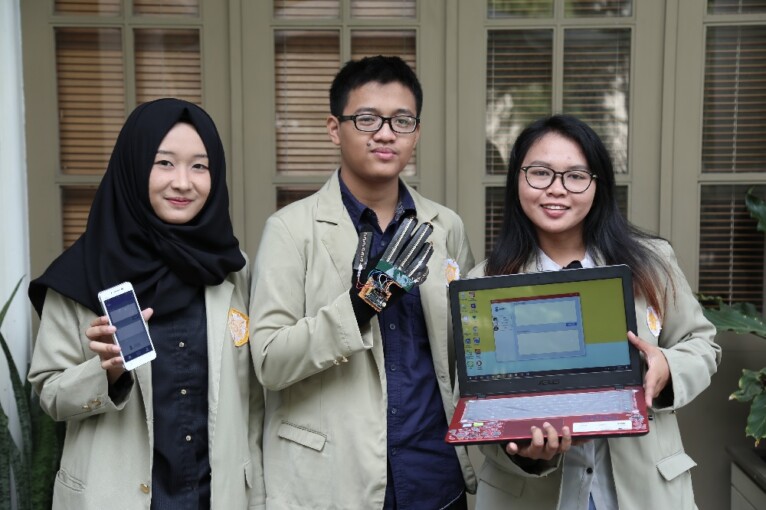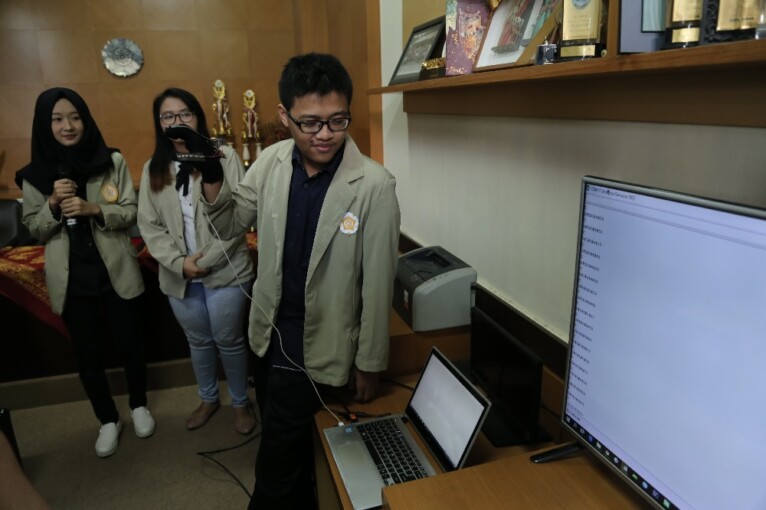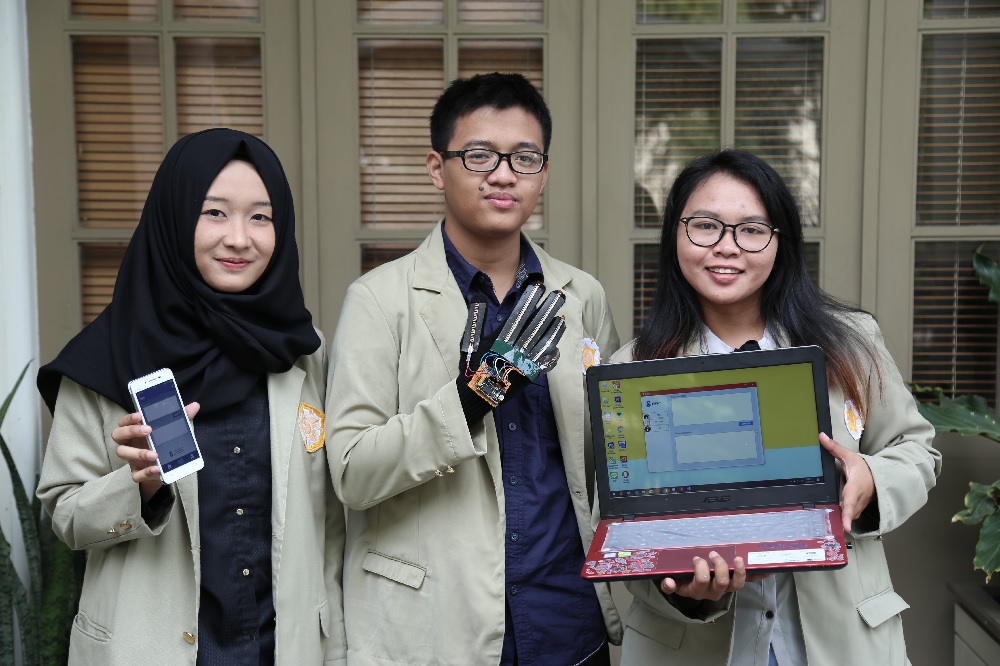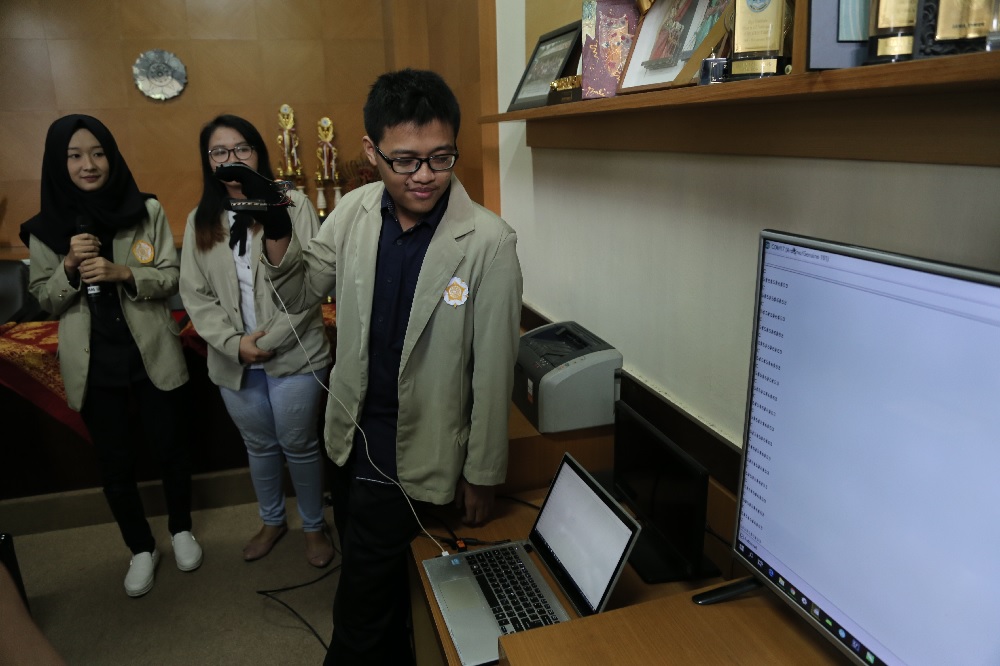A group of UGM students have developed a sign language translator for disabled people to communicate with other people.
“This comes in the form of gloves that can interpret sign language instantly into verbal language,” said team chairman, Nindi Kusuma Ningrum, on Friday (29/6) to journalists at Fortakgama UGM room.
The prototype named as SIGNLY or Sign Language Translator Synchronously is equipped with a catalogue of sign language entries from American Sign Language, Indonesian (Bisindo), and new entries using the combination of 5 right hands.
SIGNLY is developed in the Student Creativity Programme and is funded by the Higher Learning Directorate General. Nindi has collaborated with fellow students Faturahman Yudanto and Lely Monalisa under the supervision of Anugerah Galang Persada, S.T., M.Eng.
The main component is the gloves, smartphone, and computer. In the gloves there is the technology to detect hand movement and position in the form of flex sensor. The information received is alphabet output which is then displayed through desktop or smartphone based application.
“Output in the form of written verbal language or series of alphabets will be converted to sound which can be understood instantly, especially by those that don’t know sign language,” said Nindi.
The speaking partner can then respond in their own language which will be converted into written verbal forms that can be read directly by the people with hearing or speaking disability on the computer or smartphone.
Faturahman said SIGNLY was developed to allow communication between people with disabilities with their surrounding people, because sign language turns to be difficult for most people. He added the need of this tool is important remembering the big number of people with hearing disabilities. Based on the data from the WHO, in 2000 there were 250 million people in the world with hearing disorder 75 – 140 million of whom living in Southeast Asia. Health Survey by Indonesian Health Ministry (1993-1996) showed the figure of 0.4% of deaf people and 16.8% people with hearing disorder of the total Indonesian population.
Going forward, further development of the prototype will continue including the addition of the function to interpret sign language to verbal sound.
“Now we are focusing on research and development of the supporting tools,” said Lely.





